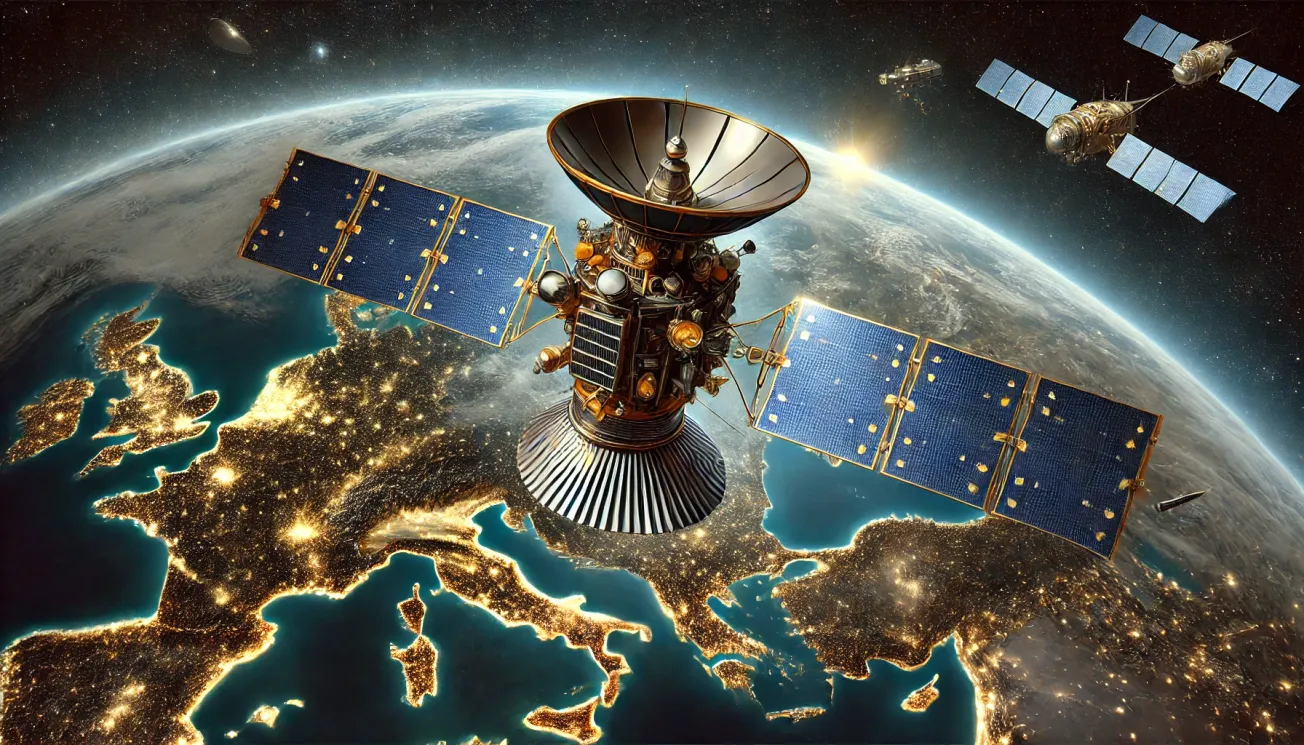I. Introduction: The Eyes in the Sky
Spy satellites, officially known as reconnaissance satellites, are among the most advanced intelligence-gathering tools in existence. Orbiting high above Earth, they provide governments, military agencies, and intelligence organizations with real-time surveillance, signals interception, and space-based reconnaissance.
From tracking enemy movements to detecting missile launches, spy satellites have revolutionized modern warfare and intelligence operations. Today, the United States, China, Russia, and other nations operate hundreds of classified reconnaissance satellites, shaping global geopolitics in ways that few civilians ever realize.
In this article, we’ll break down:
✅ The history of spy satellites
✅ The different types and how they work
✅ Who owns them and how much they cost
✅ The latest advancements and threats to their security
II. The History & Evolution of Spy Satellites 🏛️
Early Cold War Development (1950s–1970s)
The first spy satellites were developed at the height of the Cold War, as the U.S. and Soviet Union raced to gain unparalleled intelligence capabilities.
- CORONA Program (U.S.) – The first true spy satellite program, which used film-based cameras and required mid-air recovery of physical film canisters.
- Zenit (USSR) – The Soviet Union’s equivalent program, which also relied on film-based imagery.
- Major Weakness: Satellites could not transmit images digitally, leading to long delays in intelligence gathering.
📌 Did You Know? The U.S. spent $850 million on the CORONA program—a massive sum in the 1960s.
The Digital Revolution (1970s–2000s)
- KH-11 “Keyhole” Satellites (USA) – The first real-time digital spy satellites, allowing images to be transmitted directly to Earth.
- Geostationary SIGINT Satellites – Enabled continuous eavesdropping on enemy communications.
Modern-Day Spy Satellites (2000s–Present)
- Can read license plates from orbit and detect infrared heat signatures.
- AI-enhanced image processing enables real-time threat detection.
III. Types and Capabilities of Spy Satellites 🛰️
Spy satellites are designed for different intelligence-gathering missions:
- 1️⃣ Imagery Intelligence (IMINT)
- High-resolution optical cameras capture detailed ground images.
- Infrared sensors detect heat signatures (e.g., missile launches, vehicles, human activity).
- Synthetic Aperture Radar (SAR) sees through clouds and darkness.
📌 Did You Know? Some spy satellites are so powerful they can detect the heat signature of a running car engine from space.
- 2️⃣ Signals Intelligence (SIGINT)
- Intercepts military communications, radio waves, and radar signals.
- Used to track missile launches, enemy movements, and electronic warfare operations.
- 3️⃣ Electronic Intelligence (ELINT)
- Monitors enemy radar installations and air defense systems.
- Helps identify and track stealth aircraft and submarines.
- 4️⃣ Space Surveillance
- Tracks other satellites and space debris to monitor enemy assets.
- The U.S. GSSAP (Geosynchronous Space Situational Awareness Program) satellites inspect other spacecraft in orbit.
IV. Orbits and How Spy Satellites Operate 🌍
Low Earth Orbit (LEO) – 160–2,000 km
✅ Best for high-resolution imaging
❌ Requires frequent adjustments to avoid space debris
Geosynchronous Orbit (GEO) – 35,786 km
✅ Used for SIGINT & missile detection
✅ Provides continuous monitoring of a single region
📌 Did You Know? Some spy satellites use ion thrusters to slowly adjust their orbits, making them harder to track.
V. Communication & Data Handling 📡
- Transmission Methods
- Encrypted radio wave transmissions prevent interception.
- Laser communication is harder to jam.
- Ground Station Networks
- Intelligence agencies receive, decrypt, and analyze satellite data.
📌 Did You Know? The U.S. National Reconnaissance Office (NRO) operates a classified global network of ground stations to manage spy satellites.
VI. Global Deployment: Who Owns & Operates Spy Satellites? 🌍
- United States: 🇺🇸 247 military satellites (Largest fleet).
- China: 🇨🇳 157 military satellites (Expanding rapidly).
- Russia: 🇷🇺 110 military satellites (Focused on ELINT & missile tracking).
- Other Players: UK, France, Israel, India, and Japan.
📌 Did You Know? The U.S. has classified “stealth satellites” that are not publicly acknowledged in satellite tracking databases.
VII. Funding & Costs: How Much Do Spy Satellites Cost? 💰
- KH-11 spy satellites cost over $10 billion EACH.
- The U.S. NRO spent $25 billion on a classified spy satellite program over two decades.
- SpaceX was awarded a $1.8 billion contract to build a new spy satellite network.
📌 Did You Know? Spy satellites are more expensive than aircraft carriers due to their cutting-edge technology and security requirements.
VIII. Security & Countermeasures 🛡
- Encryption & Anti-Jamming Tech
- Highly advanced encryption prevents data leaks.
- Frequency hopping & signal masking make jamming difficult.
- Stealth & Counter-Surveillance
- Some satellites use low-reflectivity coatings to avoid detection.
📌 Did You Know? China and Russia are developing "counter-satellite weapons" capable of disabling spy satellites.
IX. Limitations & Challenges 🚧
- Predictable Orbits – Adversaries can hide during satellite pass times.
- Weather Dependency – Optical satellites struggle with cloud cover, but SAR compensates.
- Space Debris – Crowded orbits mean higher risk of satellite collisions.
X. Future Trends in Spy Satellites 🚀
- AI-Enhanced Image Processing – Faster threat detection without human analysts.
- Miniaturization & Swarm Satellites – Smaller, harder to detect, and operate in fleets.
- Hyperspectral Imaging – Detects missile fuel, explosives, and nuclear materials from orbit.
- Private Sector Expansion – Companies like Maxar & BlackSky now offer spy-level imagery.
- Anti-Satellite (ASAT) Warfare – Countries are testing weapons that can destroy satellites.
📌 Did You Know? The U.S. is developing a new generation of AI-driven spy satellites that will operate without human analysts.
🚀 Final Thoughts: Why Spy Satellites Are More Important Than Ever
📌 Key Takeaways:
✅ Spy satellites shape global security, military strategy, and intelligence operations.
✅ More nations and private companies are entering the reconnaissance space race.
✅ Emerging threats like ASAT weapons and space debris could impact future spy satellite operations.
🚀 The future of intelligence is in orbit. Stay informed and watch the skies!






